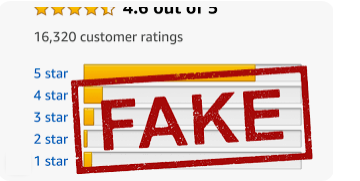There are numerous marketplaces which connect sellers and buyers of a product or service. A distinction is made between them as they do not all guarantee the same level of customer protection. The most famous ones such as Aliexpress, Amazon, eBay, Etsy, Rakuten and others generally offer customers a certain level of security. If a sale is to go wrong or the seller does not deliver the goods or services, the customer is eligible for a refund of his/her money. However, the right to a chargeback is also subject to the means of payment that was used during the transaction. For instance, if you paid the seller using bank transfer instead of the methods of payment provided by the marketplace, it is unlikely that you will be entitled to a refund. The distinction is also made depending on whether you bought from an individual or a company. If you purchased from a trader or retailer, your interests are protected in the same way as if you bought from any other online store. Tips for Shopping on an Online Marketplace Consumer Guarantees Per Marketplace You can find here your guarantees per marketplace, to better understand what your rights are when making transactions with them. Aliexpress Aliexpress is the retail branch of Alibaba where it is possible to buy products in small quantities. It is always important to check the guarantees offered by a seller, especially when the seller is foreign. Many sellers offer their own set of guarantees for some items, always check out if the product you’re interested in has them or not. For instance, expensive items possessing the ‘Guaranteed Genuine’ tag will be fully refunded if the item proves to be fake. If the ‘Guaranteed Genuine’ tag is not present, you may not get your money back. Aliexpress offers a dispute service in case you are not satisfied by the transaction; however, always wait till you receive the items before filing a complaint. Indeed, since you get only one shot at the dispute, some sellers delay the delivery on purpose. In that case, if you complain before receiving the goods, the complaint will be about the delivery time, and you will not get another chance at it if the products are of low quality. Check out Aliexpress Consumer Guarantees Amazon When placing an order at a third-party seller on Amazon, the Amazon A-to-z Guarantee protects you and covers both the timely delivery and condition of your products. If you are not satisfied with either of them, you can report the problem to Amazon, and they will assess whether you are entitled to a refund. You may be eligible to request a refund under the A-to-z Guarantee if any of the following apply: Note: Amazon may require you first to contact the seller and either wait for a response or request a refund after 48 hours. To check your eligibility, go to Request an A-to-z Guarantee Refund. You have up to 90 days after the maximum estimated delivery date to request a refund under the A-to-z Guarantee. The A-to-z Guarantee does not cover digital items, payments for services, stored value instruments. Additionally, if you file a chargeback with your payment provider or bank, you will not be eligible for a refund under the A-to-z Guarantee. Read Amazon’s Consumer Guarantees eBay To ensure all of their members have a great experience on eBay, most purchases are covered under eBay Money Back Guarantee. eBay Money Back Guarantee means you’re protected if the item you ordered didn’t arrive, is faulty or damaged, or doesn’t match the listing. This guarantee applies when: Read eBay’s Consumer Guarantees Etsy Etsy also offers a dispute resolution service much like its competitors. They advise first to try and sort out the problem with the seller, and if that is not possible, customers can avail their dispute resolution service. To report a problem with an order: If you checked out as a guest, reply to the receipt in your email to contact the seller. Read Etsy’s Consumer Guarantees Facebook Marketplace Since Facebook does not verify the products it allows to be sold on its platform, the best advice is to check the product personally before making a transaction. We also advise not to pay for anything in advance as this can easily lead to an unfinished deal. If you have some doubts about the seller or the product, or if the offer seems too good to be true, consider finding another seller whom you can trust. If you buy something faulty, even though you are entitled to a refund since the seller will be in breach of contract, Facebook cannot guarantee a refund (they also do not offer a payment interface). In that case, what is advised is to take screenshots of the conversation, report the seller to Facebook, and report the crime to the police as well. Read Facebook Marketplace’s Consumer Guarantees Rakuten Rakuten offers the Worry-Free Guarantee, which entails that they will ensure your satisfaction when shopping in their marketplace. Like any other marketplace, they advise to first try and solve the issue with the seller. However, if that is not possible or if the seller is unresponsive within two business days, you can contact Rakuten, and they will make contact with the merchant to solve the issue as fast as possible. Rakuten guarantees the resolution of the issue even if the seller is unwilling. This can include partial or full refund, depending on the case and the circumstances. The Worry-Free Guarantee does not cover: Read Rakuten Consumer Guarantees European Union Online Dispute Resolution In case you are not happy with the resolution service or performance of the marketplace itself, and you are from the European Union, you can use the European Union Online Dispute Resolution portal. Depending on the issue and the circumstances, they will also advise you on what to do and how to proceed with your issue.









